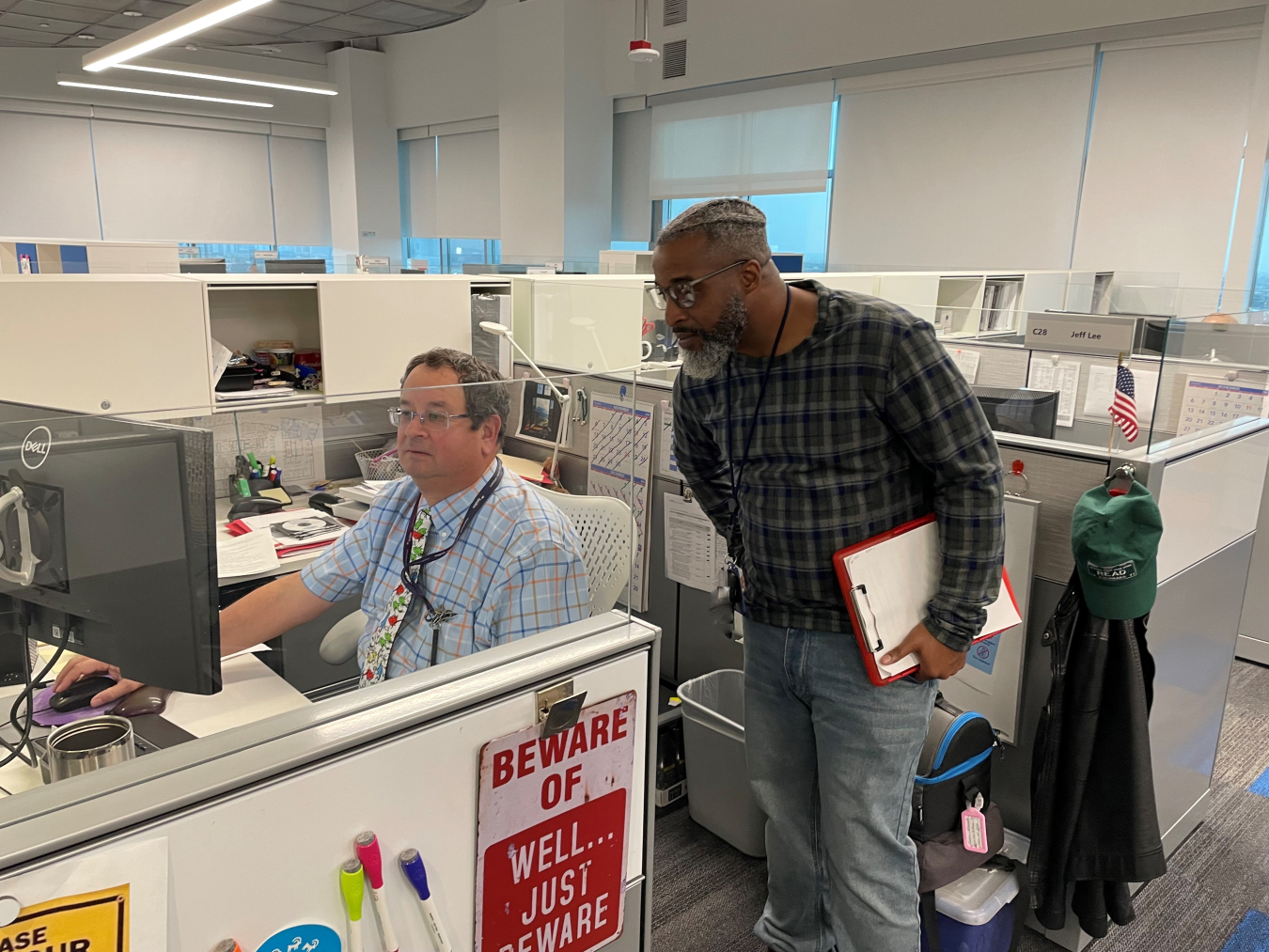Byron Smith joined the EM Nevada Program in spring 2022 to work as a real-time radiography technician. The former X-ray technician started the job with more than a decade of experience in radiology.
Office of Environmental Management
June 20, 2023
LAS VEGAS – Byron Smith joined the EM Nevada Program in spring 2022 to work as a real-time radiography technician. The former X-ray technician started the job with more than a decade of experience in radiology.
But over the past year, he has been eager to expand his role within EM Nevada’s Radioactive Waste Acceptance Program (RWAP) and help other teams within EM Nevada.
“The opportunity to do more work is a reward for what has been accomplished,” Smith said. “Being able to work outside of my scope means the world to me; it’s why I come to work every day.”
The job of a real-time radiography technician requires Smith to monitor selected waste containers before they are disposed of at the Nevada National Security Sites (NNSS) location some 65 miles northwest of Las Vegas.
EM Nevada is responsible for the safe disposal of those classified, low-level and mixed low-level waste shipments received at the NNSS from RWAP-approved generators across the U.S., primarily in support of EM and National Nuclear Security Administration (NNSA) missions. The waste is then placed in what are known as waste cells, which collectively make up the Radioactive Waste Management Complex, a highly engineered land disposal unit.
When waste containers are selected for real-time-radiography, Smith travels to the NNSS and works with Mission Support and Test Services, the NNSS management and operations contractor, in conducting and analyzing real-time radiography imaging, which amounts to a live X-ray feed of the contents of a container. Smith’s job is to ensure the reviewed waste is consistent while looking for prohibited items like liquids, batteries or electronics.
Environmental Scientist II Juan Alvarado, meanwhile, is responsible for making sure the waste cells are secure and compliant with regulations defined in the Federal Facilities Agreement and Consent Order and NNSA Resource Conservation and Recovery Act permit. When Alvarado needed an extra pair of eyes for what are known as “walk-downs” at the waste cells, he knew who to ask.
“Byron showed a lot of initiative,” Alvarado said. “He’s inquisitive and willing to step up.”
Walk-downs are visual inspections of the closed waste cells at the site. Only the soil cap, or soil cover, over each waste cell is exposed and each cap has a minimum thickness of 8 feet.
On their walk-downs, EM Nevada team members inspected each cap to ensure compliance with regulatory commitments. They observed signage to see if it’s present and legible and confirmed appropriate fencing and security measures. They also traversed the surrounding land, noting the visibility of land survey markers and monuments designed to mark the perimeter. In particular, they looked for subsidence holes — little dips, depressions or cracks in the earth’s surface that can form over time. Team members marked any flaws with flags and noted their locations so personnel could make repairs.
In addition to on-the-ground experience with Alvarado, Smith completed internal training specific to the work at the waste cells. He saw the walk-downs as an excellent opportunity to experience a wider scope of the waste disposal process and learn more about the overall EM mission at the NNSS.
“I was excited because I knew I was going to be able to see the whole site,” Smith said. “The first time we went out to Area 5 to walk the cells and look for subsidence cracks or depressions, it put me in a position to see and understand where the waste (from real-time radiography scans) is going. I got to see the work and gain exposure to more of the process.”
He added: “The readings don’t fully translate until you’re out in the field. It made my understanding of the work a lot stronger.”
Alvarado noted multiple benefits from Smith’s versatility, including saving costs for EM Nevada due to personnel filling multiple roles.
“In everything we do, it is a huge advantage when your employee base can move from one task to another,” Alvarado said.
RWAP Manager Marilew Bartling agreed, noting it facilitated teamwork, offered EM Nevada a fresh set of eyes, maximized resources and expanded Smith’s knowledge as an employee. She was not surprised to see Smith excel with the added responsibility.
“He’s got such a gregarious personality and he’s learned so much so quickly,” Bartling said. “He is exceptional in how fast he has integrated with the team.”
Alvarado and Smith have gone on numerous walk-downs since their first trip to Area 5. They will continue to perform inspections together in the months ahead.
Click here to read more about the waste acceptance program at the NNSS.
To receive the latest news and updates about the Office of Environmental Management, submit your e-mail address.

